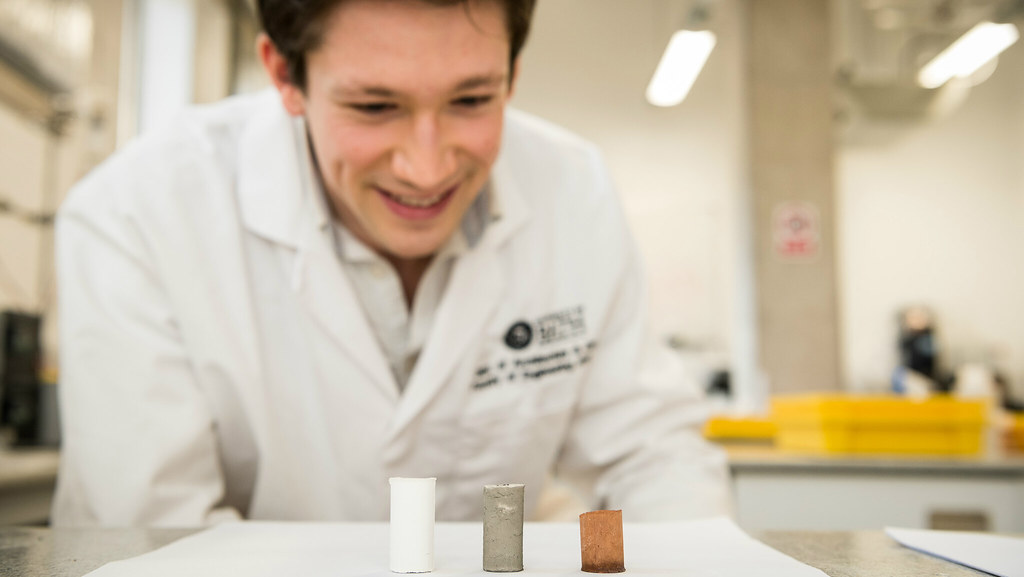Alastair Marsh from the University of Bath’s Department of Architecture & Civil Engineering is investigating the potential of using chemically altered soil – known as geopolymer-stabilised soil - as a viable and robust construction solution for building homes in some of the world’s poorest areas, where modern-day building materials can be environmentally damaging and often unaffordable.
One of humanity's greatest challenges
One of the greatest challenges facing humanity is a growing global population with the UN Department of Economic and Social Affairs estimating there will be over 9.4 billion people on the planet by 2050. Africa and Asia are expected to experience the greatest population growth, especially in urban areas.
The task of housing a growing population in poor urban areas of the least economically developed countries (LEDCs) poses a significant challenge and requires the identification of construction materials which are affordable, sustainable and environmentally-friendly, as well as meeting the social and cultural needs of urban dwellers.
University of Bath researchers are looking at ‘geopolymerisation’ of natural soils to meet future building materials requirements. This involves adding alkaline chemicals - similar to those found in household cleaning products - to the soil. By adding these chemicals, clay present in the soil is transformed into a geopolymer – a kind of ‘glue’, similar to cement, which chemically binds the material together.
Similar to cement but more energy-efficient to produce
Geopolymers are strong materials, similar to cement, except the ‘ingredients’ don’t need to be heated to the same high temperatures to react. Geopolymers typically can be fired at 80°C whereas cement and fired bricks usually require over 1000°C, making geopolymers potentially more energy-efficient to produce.
Although geopolymer-stabilised soil materials have strong potential for construction, there are numerous compositions of soil across the world and there is a significant knowledge gap in understanding how the geopolymerisation reaction works for different soil types.
At Bath, Alastair is chemically and physically testing a range of soils to understand what happens when soil undergoes a geopolymerisation reaction and ultimately determine if these new materials could be used to build quality, affordable and sustainable housing.
Housing the world's growing population without contributing to climate change an essential task
Postgraduate Researcher in Civil Engineering at the University of Bath, Alastair Marsh, said:
The familiar construction materials of fired brick and concrete have a heavy environmental cost, with cement production alone accounting for 5-10% of global greenhouse gas emissions.
Developing lower impact construction materials is an essential task to enable our world’s growing population to house ourselves adequately without contributing to climate change. Using this technology, a typical family home could be built using approximately 10 tonnes of soil, by adding 5-10% sodium hydroxide - a chemical similar to those found in household cleaning products - to geopolymerise the soil.
People living in LEDCs use a variety of traditional and conventional modern building materials to build their homes, which can have a negative effect on the environment if not sustainably sourced. For example, the widespread use of fired brick in Uganda has resulted in a large amount of deforestation from gathering wood to fuel the kilns, and a move to geopolymer stabilised blocks could have positive benefits to these communities and to the environment in general. Depending on the source materials and required properties, geopolymer-stabilised soils could have as low as half the carbon emissions impact of concrete, and a quarter that of fired bricks.
Academic supervisor and Professor of Geomaterials in the Department of Architecture & Civil Engineering, Andrew Heath, added:
This research is key to the development of sustainable housing around the world. It has already led to a joint India and UK government funded UKIERI project looking at developing sustainable housing in India, in collaboration with the Indian Institute of Science in Bangalore.

